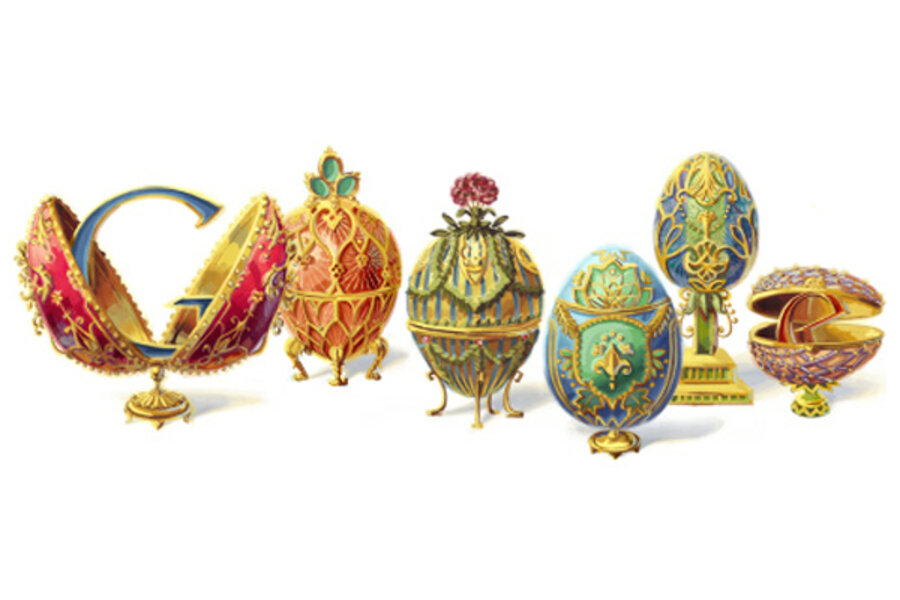Peter Carl Fabergé: How Communism crushed the Faberge egg
Loading...
Wednesday marks the 166th birthday of the legendary jeweler Peter Carl Fabergé. From 1885 to about 1916, he and his army of craftsmen made thousands of Faberge eggs. These works of gold, jewels, and enamel came to symbolize Russian royalty. And, as Wednesday's Google doodle shows, the name Fabergé still stands for opulence.
But the glamour associated with Faberge eggs seems lodged in the past. While a company named Faberge still makes eggs, they've lost their esteem, their unique flavor, and their Russian roots.
What happened? Blame the Soviets.
The original Faberge egg started as a gift for Easter, the most important day of the year in 1880s Russia. Czar Alexander III wanted to surprise his wife with a lavish Easter egg. Fabergé designed a golden egg with multiple hidden compartments, each with additional gold, diamonds, and rubies inside.
The gift was a smash hit. The royal family commissioned about 50 eggs over the next three decades, creating Fabergé's most important collection, the Imperial Easter eggs. Faberge's team created many eggs for other clients, but the Imperial line was the most elaborate, expensive, and coveted.
"There is a poignant representation of what is now Russian history in the design of a number of these eggs," writes Bruce Schulman in a history of Fabergé. "There were eggs to commemorate the coronation of Czar Nicholas II, the completion of the Trans Siberian Railway, and anniversaries. There were eggs depicting the Imperial yacht-Standart, the Uspensky Cathedral, the Gatchina Palace, and during the time of war, the Red Cross and the military."
The eggs symbolized more than historical events. They represent the decadence and fragility of the Imperial family – they mark the end of an age.
During the height of Fabergé's fame, Communism swept into Russia. Soon, revolution struck. The royal regime toppled, bringing Fabergé down with it.
The jeweler fled Russia, passing away in Switzerland just a few years later. Some historians say that he died heartbroken, torn from the Russia that he loved.
The modern-day Faberge company describes his traditional eggs as "Deeply imbued with the spirit of their age" and "the swan song of a dying civilisation."
"They trace the captivating story of the tragic end of the Romanov dynasty, of the lives and loves of the ill-fated Nicholas II and Alexandra, cocooned in the lavish opulence of their court, cut off from the harsh realities of a fast-changing world and rocked by encroaching forces of darkness," writes the Faberge company, which actually has no direct connection to the man. It bought the rights to his name just a few years ago. In 2007, the company hired Peter Carl Fabergé's great-grandaughter.
While this sounds like a sad story, there's a silver and ruby-encrusted lining. Yes, the Communists severed the Fabergé tradition, but they also shared the eggs with the world. During the revolution, Soviet leader Vladimir Lenin ordered troops to seize much of the Czar's belongings, including the Imperial eggs. By 1927, Joseph Stalin grew hungry for foreign currency and agreed to sell many of the pieces.
At this point, the third largest collector of Imperial eggs is the Virginia Museum of Fine Arts, in Richmond, which owns five of the remaining 42. Museums in Nashville, Washington, Baltimore, and Cleveland hold another eight Imperial eggs. Now, Americans can enjoy these eggs in person, and remember the precarious luxury Peter Carl Fabergé's Russia.
For more on how technology intersects daily life, follow Chris on Twitter @venturenaut.







